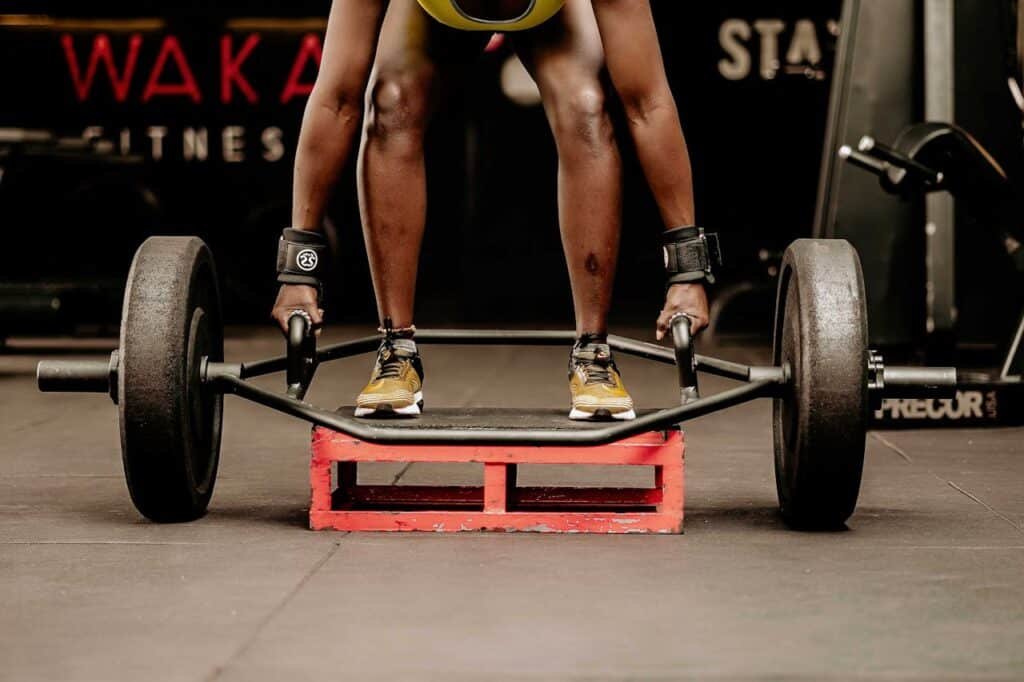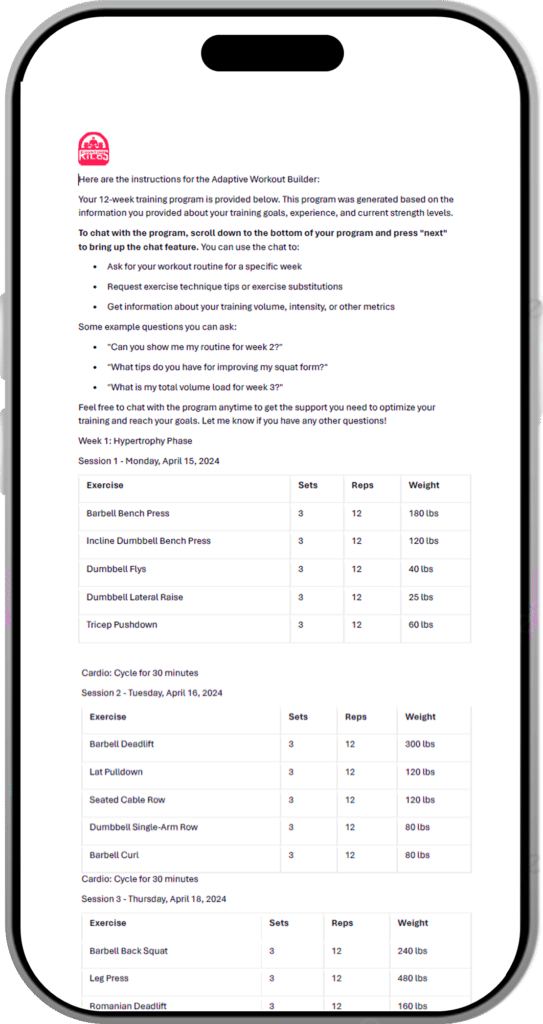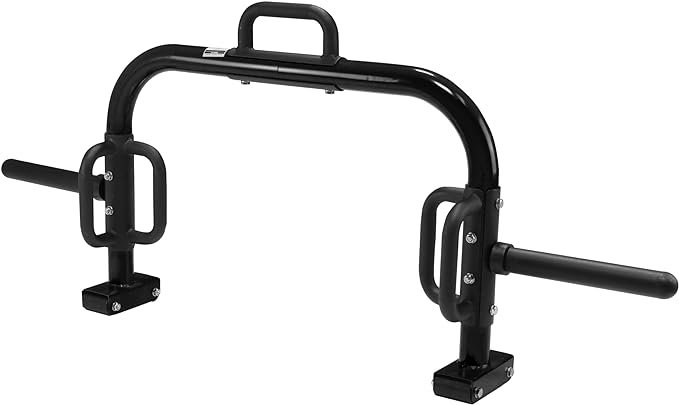The trap bar deadlift, also known as the hex bar deadlift, is a powerful compound exercise that has gained popularity among strength athletes, powerlifters, and fitness enthusiasts alike. As a strength coach and researcher with over a decade of experience, I’ve seen firsthand how this exercise can transform an athlete’s performance when executed properly. In this comprehensive guide, we’ll dive deep into the trap bar deadlift, covering everything from proper form to advanced variations and programming strategies.
Key Takeaways:
- The trap bar deadlift is a compound exercise that primarily targets the posterior chain muscles.
- It offers reduced lower back stress and improved balance compared to conventional deadlifts.
- The exercise is versatile and can be adapted for various fitness goals and skill levels.
- Proper form and technique are crucial for maximizing benefits and minimizing injury risk.

Introduction to the Trap Bar Deadlift
The trap bar deadlift is a variation of the traditional deadlift that uses a hexagonal-shaped bar, allowing the lifter to stand inside the weight. This unique design creates a more balanced and natural pulling position compared to a straight barbell deadlift.
What is a Trap Bar Deadlift?
The trap bar deadlift is performed by standing inside a hexagonal bar, gripping the handles on either side of the body, and lifting the weight off the ground by extending the hips and knees. This movement primarily targets the muscles of the posterior chain, including the glutes, hamstrings, and lower back, while also engaging the quadriceps and core muscles.
Compared to conventional deadlifts, the trap bar version offers several distinct advantages:
- Reduced stress on the lower back due to a more upright torso position
- Decreased shear forces on the spine
- Improved balance and stability throughout the lift
- Greater ease of learning for beginners
The trap bar itself was invented in the early 1980s by powerlifter Al Gerard, who was looking for a way to continue deadlifting despite back pain. Since then, it has become a staple in many strength training programs across various sports and fitness goals.
Benefits of the Trap Bar Deadlift
The trap bar deadlift offers numerous benefits that make it a valuable addition to any strength training routine:
- Lower back stress reduction: The design of the trap bar allows for a more upright torso position, which significantly reduces the stress placed on the lower back compared to traditional deadlifts.
- Improved balance and stability: Standing inside the bar creates a more balanced load distribution, making it easier to maintain proper form throughout the lift.
- Versatility for various fitness goals: Whether you’re aiming for strength, power, or hypertrophy, the trap bar deadlift can be adapted to suit your needs through variations in load, volume, and tempo.
- Accessibility for beginners and those with mobility issues: The trap bar’s elevated handles and neutral grip make it easier for beginners to learn proper deadlift form and for those with limited mobility to perform the exercise safely.
- Reduced risk of bicep tears: The neutral grip position of the trap bar eliminates the risk of bicep tears that can occur with mixed-grip conventional deadlifts.
- Carryover to athletic performance: The trap bar deadlift closely mimics the body position used in many sports, making it an excellent exercise for developing overall athletic power.
Now that we’ve covered the basics, let’s examine the proper form and technique for the trap bar deadlift.
Proper Form and Technique
Mastering the trap bar deadlift requires attention to detail and practice. Let’s break down the movement into its key components.
Setting Up for the Trap Bar Deadlift
- Foot positioning and stance width:
- Stand inside the trap bar with your feet about hip-width apart.
- Your feet should be centered in the bar, with the handles aligned with your mid-foot.
- Experiment with stance width to find what feels most comfortable and powerful for you.
- Grip options:
- The most common grip is the neutral grip, with palms facing your body.
- You can use an overhand grip if preferred, but the neutral grip is generally more comfortable and reduces stress on the shoulders.
- Ensure your grip is firm but not overly tight to prevent forearm fatigue.
- Body alignment and posture:
- Stand tall with your chest up and shoulders back.
- Engage your core by bracing as if you’re about to be punched in the stomach.
- Keep your head in a neutral position, looking forward or slightly down to maintain a neutral spine.
Executing the Lift
- Proper breathing techniques:
- Take a deep breath into your belly and brace your core before initiating the lift.
- Hold this breath throughout the concentric (lifting) phase of the movement.
- Exhale at the top of the lift or during the eccentric (lowering) phase.
- Engaging the core and maintaining a neutral spine:
- Keep your core tight throughout the entire movement.
- Maintain a neutral spine by avoiding rounding or excessive arching of the back.
- Hip hinge movement and knee bend:
- Begin the movement by hinging at the hips, pushing your buttocks back as if trying to touch a wall behind you.
- Allow your knees to bend as you lower your hips, but focus on the hip hinge as the primary movement.
- Lower yourself until you can grasp the handles of the trap bar.
- Driving through the floor and extending hips and knees:
- Once you’ve grasped the handles, drive your feet through the floor as if you’re trying to push the earth away from you.
- Extend your hips and knees simultaneously, keeping the bar close to your body.
- As you stand up, think about squeezing your glutes to fully extend your hips at the top of the movement.
- Lockout position and controlled descent:
- At the top of the lift, stand tall with your shoulders back and chest up.
- Avoid hyperextending your lower back at the top of the movement.
- To lower the weight, hinge at the hips and bend your knees, controlling the descent of the bar back to the starting position.
Common Mistakes and How to Avoid Them
- Rounding the back:
- This is often due to starting with the hips too low or not engaging the core properly.
- Focus on maintaining a neutral spine throughout the movement and initiating the lift with a hip hinge.
- Jerking the weight off the floor:
- This can lead to injury and reduces the effectiveness of the lift.
- Instead, focus on creating tension in your body before initiating the lift and pulling the slack out of the bar before driving through your legs.
- Hyperextending at the top of the movement:
- This puts unnecessary stress on the lower back.
- Focus on squeezing your glutes at the top of the lift rather than leaning back.
- Improper bar path:
- The bar should travel in a vertical line close to your body.
- Avoid letting the bar drift away from your body during the lift.
By focusing on these key points and practicing proper form, you’ll be well on your way to mastering the trap bar deadlift. Remember, it’s always better to lift lighter weights with perfect form than to sacrifice technique for heavier loads. As the great strength coach Dan John once said, “If you can’t do it light, you certainly can’t do it heavy.”
Now that we’ve covered the nuts and bolts of proper form, let’s take a closer look at the muscles worked and the biomechanical advantages of the trap bar deadlift.
Muscles Worked and Biomechanics
The trap bar deadlift is a compound movement that engages multiple muscle groups simultaneously, making it an efficient exercise for overall strength and muscle development.
Primary Muscle Groups Targeted
- Quadriceps engagement:
- The trap bar deadlift typically involves more knee flexion than a conventional deadlift, resulting in greater quadriceps activation.
- This makes the trap bar deadlift an excellent choice for athletes looking to develop explosive leg power.
- Posterior chain activation:
- Hamstrings: These muscles are heavily involved in the hip extension movement of the deadlift.
- Glutes: The primary hip extensors, glutes are crucial for powerful hip drive in the lift.
- Lower back (erector spinae): While less stressed than in a conventional deadlift, these muscles work isometrically to maintain a neutral spine.
- Core and upper body involvement:
- Core muscles: The abdominals and obliques work to stabilize the spine throughout the movement.
- Upper back: The trapezius and rhomboids are engaged to maintain proper posture and shoulder position.
- Forearms: Gripping the bar challenges the forearm muscles, improving grip strength over time.
Biomechanical Advantages
The trap bar deadlift offers several biomechanical advantages over traditional deadlift variations:
- Neutral hand position:
- Reduces stress on shoulders and biceps, decreasing the risk of bicep tears common in mixed-grip conventional deadlifts.
- Allows for a more natural arm position, potentially enabling heavier lifts.
- Centered mass distribution:
- The hexagonal shape of the trap bar places the load closer to the lifter’s center of gravity.
- This improved balance allows for better leverage and potentially higher loads compared to a straight bar deadlift.
- Reduced shear forces on the lumbar spine:
- The more upright torso position in the trap bar deadlift decreases the moment arm between the weight and the lifter’s hips.
- This results in reduced shear forces on the lumbar spine, making it a safer option for those with lower back issues or concerns.
To illustrate the biomechanical differences between trap bar and conventional deadlifts, consider the following table:
| Aspect | Trap Bar Deadlift | Conventional Deadlift |
|---|---|---|
| Torso Angle | More upright | More horizontal |
| Knee Flexion | Greater | Less |
| Hip Flexion | Less | Greater |
| Lumbar Stress | Lower | Higher |
| Balance | Improved | Challenging |
| Grip Position | Neutral | Pronated or mixed |
This comparison highlights why the trap bar deadlift is often considered a more “user-friendly” variation of the deadlift, especially for beginners or those returning from injury.
Understanding the muscles worked and biomechanical advantages of the trap bar deadlift is crucial for properly incorporating it into your training program. Speaking of which, let’s dive into how to effectively program and progress with this exercise.

Adaptive Workout Builder
STOP WASTING YOUR TIME WITHOUT A PLAN
- Personalized training programs based on user input.
- Customizable workouts targeting specific goals.
- Dynamic adjustments to workouts as progress is tracked.
- Options to request technique tips and exercise substitutions.
- Insights into training volume, intensity, and other metrics.
Programming and Progression
Incorporating the trap bar deadlift into your training routine requires thoughtful programming and a strategic approach to progression. Whether you’re a beginner looking to build a foundation of strength or an advanced lifter aiming to break through plateaus, here’s how to make the most of this versatile exercise.
Incorporating Trap Bar Deadlifts into Your Routine
- Frequency recommendations for different fitness levels:
- Beginners: 1-2 times per week, focusing on form and technique
- Intermediate: 2-3 times per week, varying intensity and volume
- Advanced: 1-3 times per week, depending on overall program structure and goals
- Sample workout plans featuring trap bar deadlifts:Beginner Full-Body Workout:
- Trap Bar Deadlift: 3 sets of 5-8 reps
- Push-ups: 3 sets of 8-12 reps
- Dumbbell Rows: 3 sets of 8-12 reps per arm
- Bodyweight Squats: 3 sets of 12-15 reps
- Trap Bar Deadlift: 4 sets of 4-6 reps
- Front Squats: 3 sets of 6-8 reps
- Romanian Deadlifts: 3 sets of 8-10 reps
- Walking Lunges: 3 sets of 10-12 steps per leg
- Speed Trap Bar Deadlifts: 6 sets of 2 reps at 60-70% 1RM
- Heavy Trap Bar Deadlifts: 3 sets of 3 reps at 85-90% 1RM
- Jump Squats: 4 sets of 5 reps
- Glute-Ham Raises: 3 sets of 8-10 reps
- Complementary exercises and muscle groups to train:
- Squats (back squats, front squats, goblet squats)
- Hip Thrusts
- Romanian Deadlifts
- Core exercises (planks, ab wheel rollouts)
- Upper body pulling movements (rows, pull-ups)
Progressive Overload Strategies
To continue making progress with the trap bar deadlift, employ these progressive overload strategies:
- Increasing weight, sets, and repetitions:
- Gradually increase the weight lifted while maintaining proper form
- Add additional sets or reps to increase overall volume
- Use a combination of heavy (3-5 reps), moderate (6-10 reps), and higher rep (12-15 reps) ranges for well-rounded development
- Varying tempo and time under tension:
- Incorporate slow eccentrics (e.g., 3-second lowering phase)
- Use paused reps at various points in the movement (e.g., pause just off the floor)
- Implement controlled concentric lifts for increased muscle activation
- Using chains or bands for accommodating resistance:
- Add chains or resistance bands to the trap bar to increase tension at the top of the movement
- This method helps develop explosive power and overcome sticking points
Remember, as the great strength coach Jim Wendler once said, “Start too light, progress too slow.” This approach ensures consistent progress while minimizing the risk of injury or burnout.
To further enhance your trap bar deadlift training, let’s explore some variations and alternatives that can add diversity to your workouts and target specific aspects of strength and power development.

Variations and Alternatives
Mastering the standard trap bar deadlift is just the beginning. By incorporating variations and similar exercises, you can target different aspects of strength and power, prevent plateaus, and keep your workouts engaging and challenging.
Trap Bar Deadlift Variations
- High-handle vs. low-handle trap bar deadlifts:
- High-handle: Reduces range of motion, making it easier for beginners or those with mobility issues
- Low-handle: Increases range of motion, more closely mimicking a conventional deadlift
- Deficit trap bar deadlifts:
- Stand on a platform (1-4 inches high) to increase range of motion
- Excellent for developing strength off the floor and improving overall pulling power
- Single-leg (unilateral) trap bar deadlifts:
- Perform the lift standing on one leg
- Enhances balance, core stability, and addresses strength imbalances between legs
- Trap bar rack pulls:
- Set the bar on blocks or in a power rack to reduce range of motion
- Useful for overloading the top portion of the lift and developing lockout strength
- Trap bar Romanian deadlifts:
- Perform a stiff-legged deadlift movement with the trap bar
- Targets the hamstrings and glutes more specifically
Similar Exercises and Their Benefits
- Farmer’s walks with the trap bar:
- Pick up the loaded trap bar and walk for distance or time
- Excellent for grip strength, core stability, and overall conditioning
- Trap bar rows:
- Bend over and row the trap bar to your chest
- Targets the upper back muscles and improves pulling strength
- Trap bar shrugs:
- Perform shrugging movements with the trap bar
- Isolates and develops the trapezius muscles
- Jumping variations for power development:
- Trap bar jumps: Perform an explosive jump while holding an unloaded or lightly loaded trap bar
- Develops explosive power and transfer to athletic movements
- Trap bar push press:
- Combine a slight knee bend with an overhead press using the trap bar
- Develops full-body power and shoulder strength
Here’s a comparison table of these variations and their primary benefits:
| Exercise Variation | Primary Benefit | Difficulty Level |
|---|---|---|
| Standard Trap Bar Deadlift | Overall strength and power | Moderate |
| High-Handle Trap Bar Deadlift | Beginner-friendly, reduced ROM | Easy |
| Low-Handle Trap Bar Deadlift | Increased ROM, more hamstring engagement | Moderate-Hard |
| Deficit Trap Bar Deadlift | Improved strength off the floor | Hard |
| Single-Leg Trap Bar Deadlift | Core stability, single-leg strength | Hard |
| Trap Bar Rack Pulls | Lockout strength and overload | Moderate |
| Trap Bar Romanian Deadlifts | Hamstring and glute emphasis | Moderate |
| Farmer’s Walks with Trap Bar | Grip strength, core stability, conditioning | Moderate |
| Trap Bar Rows | Upper back and pulling strength | Moderate |
| Trap Bar Shrugs | Trapezius muscle development | Easy |
| Trap Bar Jumps | Explosive power development | Moderate-Hard |
| Trap Bar Push Press | Full-body power, shoulder strength | Moderate |
By incorporating these variations into your training, you’ll be able to continually challenge your body in new ways, target specific weaknesses, and maintain a high level of engagement and motivation in your workouts.

Equipment and Gym Setup
To fully reap the benefits of the trap bar deadlift and its variations, it’s important to have the right equipment and a safe, well-designed gym setup.
Choosing the Right Trap Bar
Not all trap bars are created equal. When selecting a trap bar for your gym or home setup, consider the following factors:
- Weight capacity: Look for a trap bar that can accommodate the weight you plan to lift, with a suitable safety margin.
- Handle design and knurling: High-quality knurling (the cross-hatch pattern on the handles) provides a secure grip, even when your hands get sweaty.
- Handle diameter: A handle diameter of around 25-30mm is generally considered optimal for a comfortable and secure grip.
- Overall construction: Look for a trap bar made from high-quality steel, with solid welds and a durable finish to withstand heavy use.
- Brand reputation: Reputable fitness equipment brands are more likely to offer high-quality, well-designed trap bars that meet safety standards.
Proper Gym Setup for Safe Lifting
Creating a safe and functional gym environment is crucial for maximizing the benefits of your trap bar deadlift training. Here are some key considerations:
- Flooring requirements and platform use: Lifting heavy weights requires a solid, non-slip surface. Rubber flooring or a dedicated lifting platform can help protect your floors and provide a stable base.
- Space considerations and surrounding equipment: Ensure you have enough clearance around the trap bar to perform the lift safely, without obstructions or potential hazards.
- Safety measures and spotting techniques: While the trap bar deadlift is generally a safer variation than conventional deadlifts, it’s still important to use proper safety measures, such as spotters or safety pins in a power rack, especially when lifting heavy weights.
- Adequate lighting and ventilation: A well-lit and properly ventilated gym environment can improve your focus and performance during intense lifting sessions.
By investing in quality equipment and creating a safe, functional gym setup, you’ll be able to perform the trap bar deadlift and its variations with confidence, maximizing your strength gains and minimizing the risk of injury.

FAQs and Troubleshooting
As with any exercise, it’s natural to have questions and encounter challenges when incorporating the trap bar deadlift into your training routine. Here, we’ll address some common concerns and provide strategies for overcoming plateaus and sticking points.
Addressing Common Concerns
- How do trap bar deadlifts affect conventional deadlift strength? While the movements are similar, the trap bar deadlift and conventional deadlift do not have a perfect strength carryover. However, incorporating trap bar deadlifts into your training can help improve overall pulling strength, which can translate to better conventional deadlift performance, especially for those who struggle with the conventional deadlift due to mobility or leverages.
- Are trap bar deadlifts suitable for different body types and injury histories? The trap bar deadlift is generally considered a more accessible variation for a wide range of body types and injury histories. The reduced shear forces on the lumbar spine and improved balance make it a safer option for those with lower back issues or mobility limitations. However, it’s always best to consult with a qualified professional before starting any new exercise program, especially if you have pre-existing injuries or conditions.
- How do trap bar deadlifts compare to other compound movements? The trap bar deadlift is a highly effective compound exercise that targets multiple muscle groups simultaneously. While it may not be as taxing on the lower back as conventional deadlifts, it can be a valuable addition to a well-rounded strength training program, complementing other compound movements like squats, presses, and rows.

Overcoming Plateaus and Sticking Points
Even with proper programming and technique, it’s common to encounter plateaus or sticking points in your trap bar deadlift progress. Here are some strategies to help you break through:
- Identifying weak points in the lift:
- Use video analysis or a qualified coach to identify weaknesses in your form or technique.
- Common sticking points include off-the-floor, mid-range, and lockout positions.
- Accessory exercises to target specific weaknesses:
- Incorporate exercises that target the specific muscle groups or movement patterns where you’re struggling.
- For example, if you’re weak off the floor, try deficit trap bar deadlifts or paused deadlifts from a deficit.
- If you struggle with lockout, try rack pulls or isometric holds at the top of the movement.
- Mental strategies for breaking through plateaus:
- Visualize yourself successfully executing the lift.
- Use positive self-talk and affirmations to boost confidence.
- Employ advanced techniques like forced reps or drop sets to push past mental barriers.
- Periodization and deload periods:
- Strategically plan periods of higher intensity and volume, followed by deload weeks to allow for recovery and adaptation.
- This can help prevent burnout and ensure continued progress over time.
Remember, progress is rarely linear, and plateaus are a natural part of the training process. By remaining patient, consistent, and open to adjustments, you’ll be able to overcome obstacles and continue making gains with the trap bar deadlift.
Conclusion
The trap bar deadlift is a versatile and effective exercise that offers numerous benefits for strength athletes, powerlifters, and fitness enthusiasts alike. By mastering proper form, understanding the biomechanics, and implementing strategic programming and progression strategies, you can unlock the full potential of this powerful movement.
Recap of Key Points
- The trap bar deadlift targets the posterior chain muscles while reducing stress on the lower back compared to conventional deadlifts.
- Proper form and technique are crucial for maximizing benefits and minimizing injury risk.
- Incorporating trap bar deadlifts into your routine can be tailored to various fitness levels and goals through variations in load, volume, and tempo.
- Employing progressive overload strategies and exploring variations can help prevent plateaus and keep your training engaging and challenging.
- Investing in quality equipment and creating a safe gym setup is essential for optimal performance and injury prevention.

Future Developments and Research
As the popularity of the trap bar deadlift continues to grow, we can expect to see ongoing research and innovation in this area. Potential future developments may include:
- Further studies on the biomechanics and muscle activation patterns of the trap bar deadlift and its variations.
- Advancements in trap bar design and construction, such as adjustable handle heights or integrated resistance bands.
- Exploration of new training methodologies and programming strategies specific to the trap bar deadlift.
Regardless of these future developments, the trap bar deadlift will undoubtedly remain a staple in strength training programs for years to come. By embracing this powerful exercise and continuously refining your approach, you’ll be well on your way to achieving your strength and performance goals.




Somebody essentially help to make significantly articles Id state This is the first time I frequented your web page and up to now I surprised with the research you made to make this actual post incredible Fantastic job
Hey there You have done a fantastic job I will certainly digg it and personally recommend to my friends Im confident theyll be benefited from this site